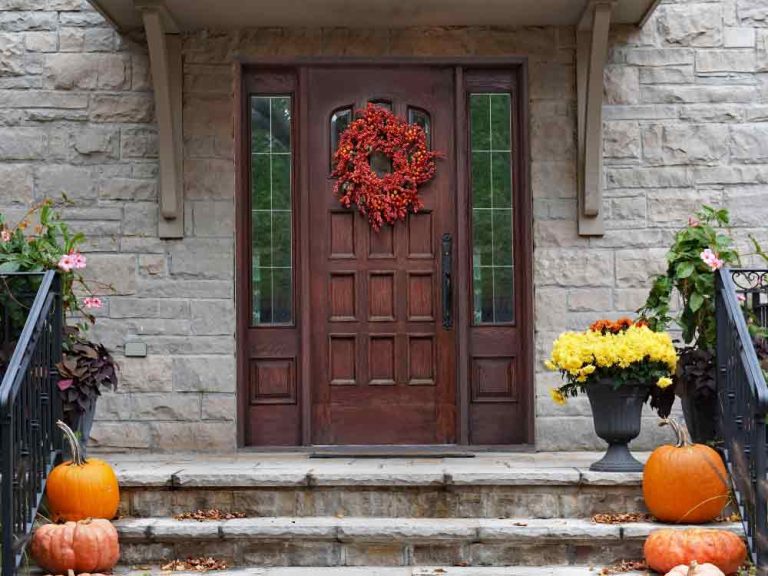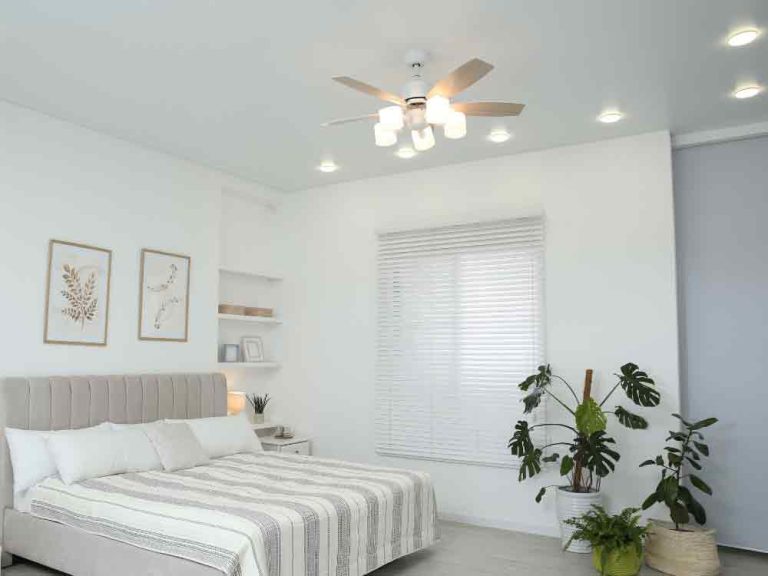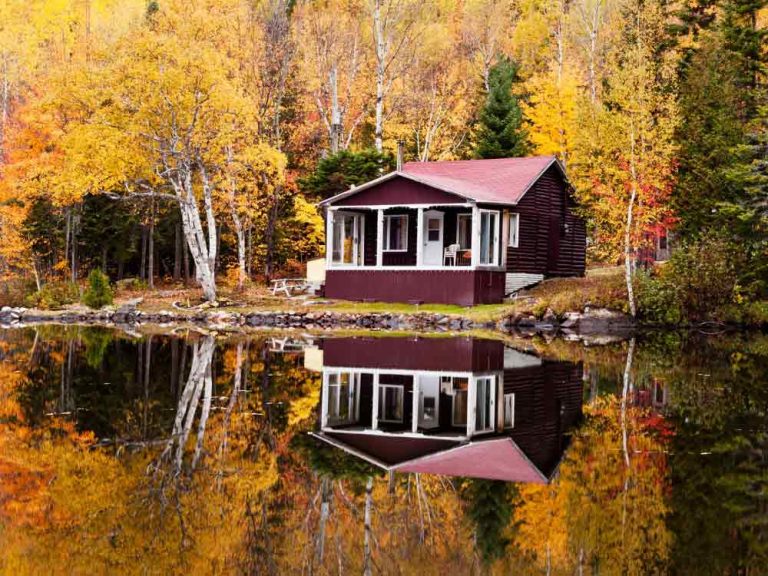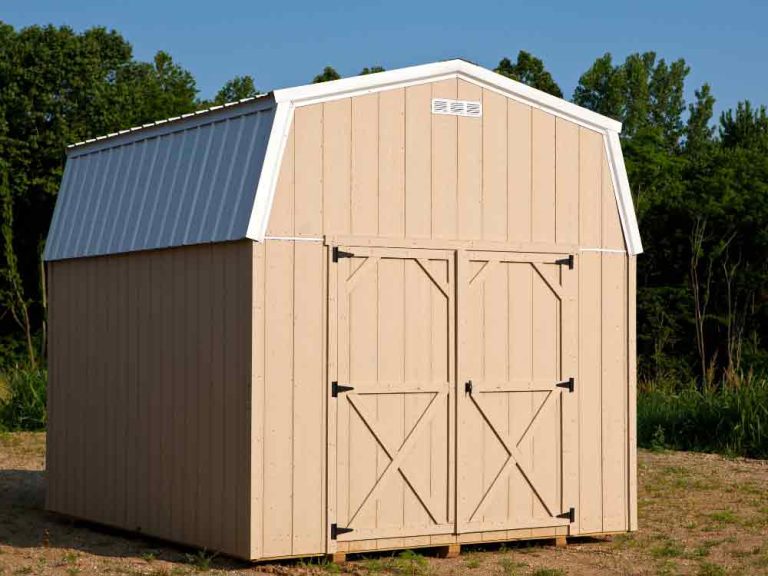30 Inspiring Shipping Container Home Ideas: Creative Solutions for Modern Living
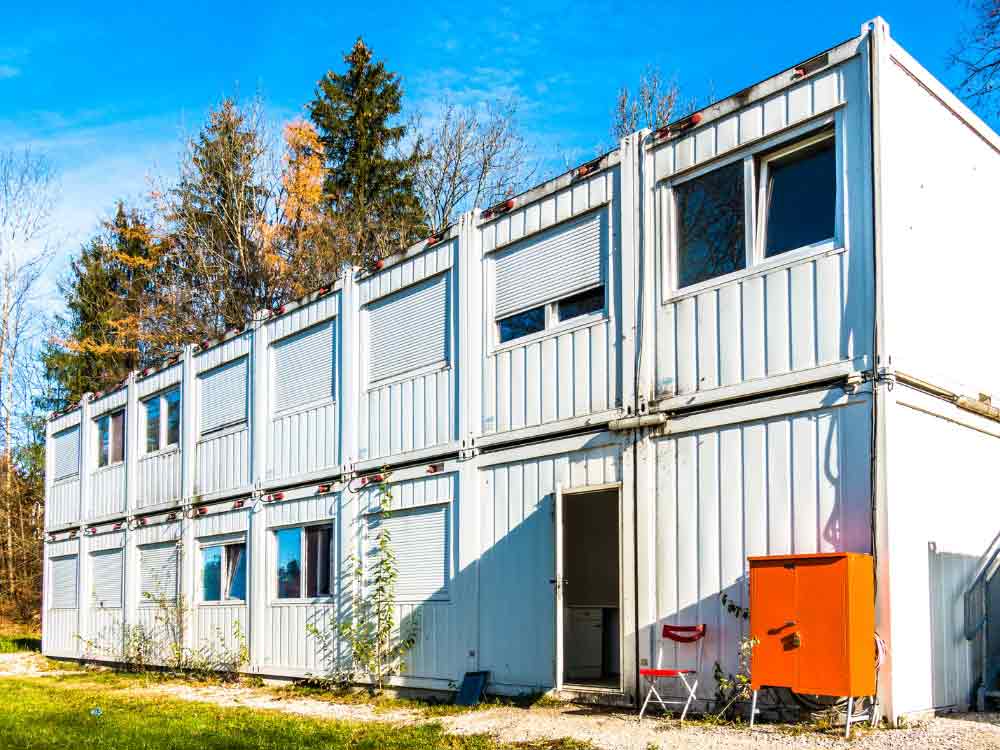
Building a home from shipping containers is more than just a creative idea; it’s a smart choice that shows our wish for affordable housing, sustainable living, and unique design. Smart planning and creative thinking play an important role in making these metal boxes into comfortable, beautiful homes.
The shipping container home concept uses recycled materials, clever space planning, and modern design ideas that not only save money but also help protect our environment and create one-of-a-kind living spaces.
This article explores many different design ideas for shipping container homes, showing how various styles work for different needs and budgets. From small one-container studios to large multi-container family homes, each design has its own special features while following the basic ideas of container home construction.
Join us on this journey as we look at 30 amazing shipping container home ideas, each giving you useful tips and advice for building your own unique home.
1. Single Container Studio with Industrial Charm
Picture walking into a cozy studio home made from one 40-foot shipping container. The inside features exposed metal walls painted white, creating a bright open space. A small kitchen area sits on one end, while a comfortable sleeping loft uses the vertical space above.
Large glass doors on one side open to a wooden deck, bringing lots of natural light inside. The combination of industrial materials and warm wood touches creates a modern yet welcoming atmosphere.
This design is perfect for single people or couples who want a simple, affordable home. The open layout makes the small space feel bigger, while the industrial style gives it character and personality.
Tips for Your Container Studio:
- Paint the interior walls white or light colors to make the space feel larger and brighter.
- Install a sleeping loft to maximize floor space for living areas.
- Add large glass doors or windows to bring in natural light and connect with outdoor spaces.
- Use warm wood elements like flooring or shelving to balance the industrial metal walls.
2. Two-Container L-Shaped Modern Home
This modern shipping container home uses two 40-foot containers arranged in an L-shape, creating separate living and bedroom zones. The containers are painted matte black on the outside, giving a sleek contemporary look. A covered patio sits in the corner where the two containers meet, creating a protected outdoor living area.
Inside, the first container holds an open-plan kitchen and living room with polished concrete floors. The second container contains two bedrooms and a bathroom, providing privacy from the main living space.
The L-shaped design creates a natural courtyard area, perfect for outdoor dining and relaxation. This layout works well for small families or couples who want defined spaces without building a large home.
Design Tips:
- Arrange containers in an L-shape to create a protected outdoor courtyard space.
- Paint containers in dark colors like black or charcoal for a modern appearance.
- Use one container for public spaces and another for private bedrooms.
- Add a covered patio between containers for comfortable outdoor living.
3. Three-Story Stacked Container Home
This impressive shipping container home stacks three 20-foot containers vertically, creating a narrow but tall house perfect for small urban lots. Each level serves a different purpose: the ground floor has the kitchen and dining area, the middle level contains the living room, and the top level holds the bedroom with amazing views.
An external metal staircase connects all three levels, while large windows on each floor provide plenty of natural light. The vertical design uses very little ground space but offers comfortable living areas spread across three floors.
This design solution works wonderfully in cities where land is expensive or limited. The stacked containers create an eye-catching architectural feature that stands out in any neighborhood.
Building Tips:
- Ensure proper structural support when stacking containers vertically.
- Install an external staircase to save interior space.
- Add large windows on each level for light and views.
- Place bedrooms on upper floors for privacy and better views.
4. Family-Sized Four-Container Ranch
This spacious family home combines four 40-foot containers in a rectangular layout, creating over 1,200 square feet of living space. Two containers form the main living area with an open kitchen, dining room, and family room. The other two containers provide three bedrooms and two bathrooms.
A traditional pitched roof covers all four containers, making the home look less industrial and more like a conventional house. Wood siding on the exterior adds warmth and helps the home blend into residential neighborhoods.
This design proves that container homes can be large enough for families while still being more affordable than traditional construction. The rectangular layout is simple to build and efficient to heat and cool.
Planning Tips:
- Use four or more containers to create family-sized homes with multiple bedrooms.
- Add a traditional roof to make the home look less industrial.
- Cover exterior walls with wood or other siding for a conventional appearance.
- Create an open floor plan in living areas to maximize space and light.
5. Off-Grid Container Cabin in the Woods
This remote shipping container cabin sits in a forest clearing, designed for off-grid living. One 40-foot container provides a simple but complete home with solar panels on the roof, a rainwater collection system, and a composting toilet inside.
The container is painted forest green to blend with the natural surroundings. Large windows and a glass door on one end create a strong connection with nature, while a small wood stove provides heat during cold months.
This design is perfect for people who want a vacation retreat or a simple home away from city life. The container’s durability protects against weather and wildlife, while the off-grid systems provide independence from utilities.
Off-Grid Tips:
- Install solar panels on the roof for electricity generation.
- Set up rainwater collection systems with proper filtration.
- Use a wood stove for heating in cold climates.
- Paint containers in earth tones to blend with natural surroundings.
6. Beach House Container Home with Ocean Views
This beautiful beach house uses three 40-foot containers arranged in a U-shape around a central pool area. Large sliding glass doors on all containers open completely, creating an indoor-outdoor living experience perfect for warm climates.
The containers are elevated on concrete pillars to protect from flooding and to take advantage of ocean breezes. A large wooden deck surrounds the entire structure, providing plenty of outdoor living space with amazing water views.
The U-shaped design creates a private courtyard feel while maximizing ocean views from all rooms. This layout works wonderfully for vacation homes or permanent residences in coastal areas.
Coastal Design Tips:
- Elevate containers on pillars for flood protection and better views.
- Use large sliding glass doors that open completely for indoor-outdoor living.
- Arrange containers to create protected outdoor spaces from wind.
- Install large decks for outdoor entertaining and relaxation.
7. Minimalist Single Container Tiny Home
This minimalist tiny home uses one 20-foot container, creating a compact 160-square-foot living space. Every inch is carefully planned, with built-in furniture that serves multiple purposes. A murphy bed folds down from the wall at night and stores away during the day.
The interior is painted completely white with light wood accents, making the small space feel open and airy. One end has a tiny kitchen with a two-burner stove and small refrigerator, while the other end contains a compact bathroom with a shower.
This design shows how little space you really need to live comfortably. It’s perfect for people who want to live simply, save money, or have a tiny vacation home.
Tiny Home Tips:
- Use one 20-foot container for an ultra-compact living space.
- Install murphy beds or other folding furniture to save space.
- Keep the color scheme light and bright to make small spaces feel larger.
- Build custom furniture that fits perfectly and serves multiple purposes.
8. Artist Studio Container with Skylights
This creative studio space converts a 40-foot container into a bright workspace for artists or crafters. Multiple skylights cut into the roof provide excellent natural light throughout the day, essential for creative work.
The interior features white walls and polished concrete floors that reflect light and create a gallery-like atmosphere. Built-in storage along one wall holds art supplies, while a large work table dominates the center space.
This design works perfectly as a backyard studio, home office, or creative workspace separate from the main house. The container provides a quiet, dedicated space for focused work.
Studio Design Tips:
- Cut skylights into the roof for excellent natural lighting.
- Paint interior walls white to maximize light reflection.
- Install built-in storage to keep supplies organized.
- Use durable flooring like polished concrete that’s easy to clean.
9. Two-Container Guest House
This charming guest house uses two 20-foot containers placed parallel with a covered walkway between them. One container holds a bedroom with a comfortable queen bed, while the other contains a small living area and bathroom.
The covered space between the containers creates a pleasant outdoor sitting area, perfect for morning coffee or evening relaxation. Both containers have large windows that provide good ventilation and natural light.
This design is ideal for hosting guests while maintaining privacy from the main house. It can also work as a rental unit for extra income or a separate living space for older children or relatives.
Guest House Tips:
- Use two smaller containers instead of one large one for better space division.
- Create a covered area between containers for protected outdoor space.
- Include a full bathroom and small kitchen for guest independence.
- Add comfortable furnishings to make guests feel welcome.
10. Container Home with Green Roof Garden
This eco-friendly container home features a living green roof covered with drought-resistant plants and grasses. Two 40-foot containers sit side by side, with the roof area transformed into a beautiful garden space that provides insulation and manages rainwater.
The green roof helps keep the home cool in summer and warm in winter, reducing energy costs. A ladder provides access to the roof garden, which includes a small seating area for enjoying views and nature.
This design combines sustainable building practices with beautiful aesthetics. The green roof also helps the home blend into natural surroundings and supports local wildlife like birds and butterflies.
Green Roof Tips:
- Ensure containers are properly reinforced to support the weight of soil and plants.
- Choose drought-resistant plants that require minimal maintenance.
- Install proper waterproofing and drainage systems.
- Add a safe access ladder or stairs to enjoy the roof garden.
11. Modern Container Home with Wood Cladding
This sophisticated container home uses three 40-foot containers but hides their industrial appearance with beautiful cedar wood cladding on the exterior. The wood covers all the metal surfaces, creating a warm, natural look that fits well in any neighborhood.
Large modern windows punctuate the wood cladding, providing plenty of natural light. The interior maintains an open floor plan with high ceilings, making the space feel much larger than expected.
This design shows how container homes can look upscale and conventional while still maintaining the benefits of container construction. The wood cladding also provides extra insulation and weather protection.
Cladding Tips:
- Cover containers with wood, fiber cement, or other siding materials for a conventional appearance.
- Choose high-quality materials that will weather well over time.
- Ensure proper ventilation between the container walls and exterior cladding.
- Add extra insulation during the cladding installation process.
12. Container Pool House with Bar
This fun pool house combines one 40-foot container with a large covered deck area. One end of the container is completely open, creating a covered outdoor bar and entertaining space. The other end contains a bathroom with outdoor shower and storage for pool equipment.
The container is painted bright white to reflect heat and keep the space cool. Bar stools line the counter, and ceiling fans keep air moving during hot days. String lights and comfortable outdoor furniture create a resort-like atmosphere.
This design is perfect for people who love entertaining and want a functional pool house. The container provides weather-protected space while maintaining a strong connection to the outdoor pool area.
Pool House Tips:
- Remove one end of the container completely to create an open entertaining space.
- Install a bathroom and outdoor shower for convenience.
- Add plenty of storage for pool toys and equipment.
- Use ceiling fans and good ventilation to keep the space comfortable.
13. Shipping Container Apartment Building
This innovative apartment building stacks twelve 40-foot containers to create six modern apartments. Containers are arranged in pairs, with each apartment using two containers for a spacious two-bedroom layout.
External metal staircases and walkways provide access to upper units, while the ground floor apartments have small private patios. The building is painted in different colors, creating a vibrant, modern appearance that stands out in the urban landscape.
This design shows how container construction can address affordable housing needs in cities. The modular nature of containers makes construction faster and less expensive than traditional apartment buildings.
Apartment Building Tips:
- Work with structural engineers to ensure safe stacking and support.
- Provide external access to upper units to save interior space.
- Paint units in different colors for visual interest and unit identification.
- Include proper fire safety systems and sound insulation between units.
14. Container Home Office in the Backyard
This professional home office uses one 20-foot container placed in the backyard, creating a quiet workspace separate from the house. Large windows on both ends provide excellent natural light, while insulation and air conditioning keep it comfortable year-round.
Built-in desk space runs along one wall, with plenty of electrical outlets for computers and equipment. Shelving and storage cabinets keep office supplies organized, and high-speed internet connection keeps you productive.
This design is perfect for remote workers who need a dedicated office space away from household distractions. The separate structure also provides clear boundaries between work and home life.
Home Office Tips:
- Place the office container far enough from the house to minimize distractions.
- Install plenty of windows for natural light to reduce eye strain.
- Ensure good insulation and climate control for year-round comfort.
- Include sufficient electrical outlets and strong internet connection.
15. Rustic Container Hunting Cabin
This rugged hunting cabin uses one 40-foot container as a base, with rough-cut wood siding added to the exterior for a rustic appearance. A covered front porch provides a place to sit and watch for wildlife, while a small wood stove inside provides heat.
The interior is simple but functional, with bunk beds, a small kitchen area, and basic bathroom facilities. The design focuses on durability and low maintenance rather than luxury, perfect for a seasonal hunting retreat.
This cabin shows how containers can be used for remote recreational properties where durability and security matter more than high-end finishes.
Hunting Cabin Tips:
- Choose durable materials that can withstand harsh weather and limited maintenance.
- Install a wood stove for reliable heat without electricity.
- Use bunk beds to accommodate multiple hunters in a small space.
- Add a covered porch for outdoor gear storage and relaxation.
16. Luxury Container Home with Pool
This upscale container home combines six 40-foot containers in an H-shape design, creating over 2,000 square feet of luxury living space. The center area between the parallel containers holds a beautiful swimming pool and outdoor living area.
High-end finishes throughout include hardwood floors, granite countertops, and designer fixtures. Large glass walls slide open to connect interior spaces with the pool area, perfect for entertaining.
This design proves that container homes can be just as luxurious and spacious as traditional homes while still maintaining construction cost advantages. The unique architecture creates a stunning modern estate.
Luxury Home Tips:
- Use multiple containers to create spacious floor plans with proper room sizes.
- Invest in high-quality finishes and fixtures for an upscale appearance.
- Design the layout to take advantage of outdoor living spaces.
- Work with architects to create unique, eye-catching designs.
17. Container Farm Stand and Shop
This commercial application uses two 20-foot containers to create a seasonal farm stand and retail shop. The containers are painted in bright, welcoming colors with large service windows that open to serve customers.
One container holds refrigeration for fresh produce, while the other contains a workspace and point-of-sale area. A covered awning extends from both containers, providing shade for customers and creating an attractive shopping environment.
This design shows how containers can be used for small businesses and retail applications. The mobile nature of containers means the farm stand could be moved to different locations if needed.
Commercial Tips:
- Paint containers in bright, attractive colors to draw customers.
- Install large service windows for easy customer interaction.
- Include refrigeration and proper storage for products.
- Add awnings or covered areas for customer comfort.
18. Mountain Retreat Container Cabin
This beautiful mountain cabin uses three 40-foot containers arranged on a sloped lot to take advantage of valley views. The containers step down the hillside, with each level connected by internal stairs.
Large windows face the mountain views, while the back of the containers burrow into the hillside for stability and insulation. A large deck extends from the main level, providing outdoor space with spectacular scenery.
This design shows how containers can be adapted to challenging building sites where traditional construction would be difficult or expensive. The stepped design works perfectly with the natural terrain.
Mountain Building Tips:
- Work with the natural slope rather than trying to create flat building sites.
- Orient large windows toward the best views.
- Anchor containers firmly to prevent shifting on slopes.
- Design decks that extend living space and take advantage of scenery.
19. Container Garage and Workshop
This practical garage uses two 40-foot containers placed side by side, creating a two-car garage with additional workshop space. Roll-up doors on one end provide vehicle access, while windows and a pedestrian door allow easy workshop use.
The interior includes built-in workbenches, tool storage, and electrical outlets throughout. One section is climate-controlled for detailed work, while the garage area remains unheated for simple vehicle storage.
This design works well as a detached garage for a main house or as a standalone workshop for hobbies and projects. The steel construction provides security for valuable tools and equipment.
Garage Tips:
- Use two containers side by side to create adequate space for vehicles and work areas.
- Install roll-up doors that provide wide access for vehicles.
- Add plenty of electrical outlets and good lighting throughout.
- Include climate control in workshop areas for comfortable year-round use.
20. Container Coffee Shop
This trendy coffee shop converts two 20-foot containers into a hip urban café. Large windows and doors allow the containers to open completely, creating an indoor-outdoor dining experience. The interior features a espresso machine, display cases for pastries, and a small kitchen area.
Industrial décor embraces the container aesthetic, with exposed metal walls and ceiling, combined with warm wood counters and seating. A large outdoor seating area with umbrellas provides additional customer space.
This design demonstrates how containers can create unique commercial spaces that attract customers with their distinctive appearance. The lower construction costs help small business owners get started.
Coffee Shop Tips:
- Open up containers with large windows and doors for customer visibility.
- Embrace the industrial aesthetic rather than hiding the container appearance.
- Provide both indoor and outdoor seating options.
- Ensure proper ventilation and commercial kitchen equipment.
21. Container Home with Rooftop Deck
This creative container home stacks two 40-foot containers with the top container set back, creating a large rooftop deck on the lower container. The deck provides amazing outdoor living space with views of the surrounding area.
A modern glass railing around the rooftop deck ensures safety while maintaining clear views. Outdoor furniture, a grill, and even a small hot tub make this deck a favorite gathering spot for family and friends.
This design maximizes outdoor living space without requiring a large lot. The rooftop location provides privacy and better views than a ground-level deck.
Rooftop Deck Tips:
- Ensure the lower container is properly reinforced to support deck weight and usage.
- Install safe, attractive railings that meet local building codes.
- Add shade structures or pergolas for sun protection.
- Include outdoor lighting for evening use.
22. Energy-Efficient Container Home
This eco-friendly container home uses three 40-foot containers with extensive insulation, solar panels, and energy-efficient systems throughout. Spray foam insulation covers all interior surfaces, creating an airtight envelope that minimizes heating and cooling costs.
Solar panels on the roof generate most of the home’s electricity, while a solar water heater provides hot water. LED lighting, energy-efficient appliances, and a high-efficiency heat pump complete the sustainable systems.
This design shows how container homes can be extremely energy-efficient when built with the right systems. Monthly utility bills are minimal, making the home more affordable to operate long-term.
Energy Efficiency Tips:
- Install thick spray foam insulation to create an airtight building envelope.
- Add solar panels to generate electricity and reduce utility costs.
- Choose energy-efficient appliances and LED lighting throughout.
- Install high-efficiency heating and cooling systems.
23. Container Retail Boutique
This stylish retail boutique uses one 40-foot container with a striking black and white paint scheme. Large glass doors at one end allow customers to enter easily, while windows along one side provide display space and natural light.
The interior features custom-built display fixtures, dressing rooms, and a point-of-sale counter. Modern lighting and hardwood floors create an upscale shopping environment that doesn’t feel like a cargo container.
This design proves that containers can create attractive commercial spaces for high-end retail. The unique appearance helps the boutique stand out and attract customers.
Retail Tips:
- Design attractive storefront with large glass doors and windows.
- Install custom fixtures that maximize display and storage space.
- Use quality finishes to create an upscale shopping environment.
- Ensure good lighting to showcase products effectively.
24. Container Home with Greenhouse
This innovative home combines two 40-foot residential containers with one greenhouse container for year-round gardening. The greenhouse container has a clear polycarbonate roof and walls, creating a bright growing space attached to the main house.
The greenhouse stays warm in winter and provides fresh vegetables and herbs throughout the year. A door connects it directly to the kitchen, making it easy to harvest produce while cooking.
This design appeals to people who want to grow their own food and connect with nature. The attached greenhouse also helps heat the home through passive solar gain during winter months.
Greenhouse Tips:
- Use polycarbonate panels for the greenhouse container roof and walls.
- Connect the greenhouse to the kitchen for convenient access.
- Install proper ventilation to prevent overheating in summer.
- Add raised beds or shelving for efficient plant growing.
25. Multi-Generational Container Compound
This family compound uses eight containers arranged around a central courtyard, creating separate living spaces for multiple generations. Two containers form the main family home, while two other containers create a grandmother’s apartment. Four additional containers provide guest rooms, a shared game room, and storage.
The courtyard design keeps family members close while providing privacy and independence. A large covered patio in the courtyard serves as the gathering spot for family meals and celebrations.
This design shows how containers can create flexible living arrangements for extended families who want to live near each other while maintaining separate households.
Compound Tips:
- Arrange containers around a central courtyard for connection and privacy.
- Create fully independent living units with kitchens and bathrooms.
- Include shared spaces for family gatherings and activities.
- Design good soundproofing between units for privacy.
26. Container Yoga Studio
This peaceful yoga studio converts one 40-foot container into a serene practice space. Large sliding doors on both ends open completely, allowing fresh air and creating a connection with nature during classes.
The interior features light wood floors, white walls, and large mirrors for checking form. Built-in storage holds yoga mats, blocks, and other equipment, while soft lighting creates a calming atmosphere.
This design works perfectly for yoga instructors who want their own studio space or for wellness-focused homeowners who want a dedicated practice area. The separate structure creates a peaceful retreat away from daily life.
Yoga Studio Tips:
- Install large doors that open completely for fresh air and views.
- Use light colors and natural materials to create a calming environment.
- Include full-length mirrors for form checking.
- Add good sound insulation if teaching classes with music.
27. Container Home with Courtyard Pool
This stunning home arranges four 40-foot containers in a square around a central courtyard pool. Each container serves a different purpose: master suite, children’s bedrooms, living areas, and kitchen. Large sliding glass doors on all containers face the pool, creating a resort-like feel.
The protected courtyard provides privacy from neighbors while maximizing outdoor living. The pool is visible from all rooms, creating a strong indoor-outdoor connection throughout the home.
This design works beautifully in warm climates where outdoor living is possible most of the year. The courtyard layout creates a private oasis in the middle of the home.
Courtyard Tips:
- Arrange containers in a square or U-shape around a central outdoor space.
- Install large glass doors on all containers facing the courtyard.
- Design the courtyard for multiple uses: pool, dining, relaxation.
- Add privacy walls or landscaping around the exterior.
28. Container Music Studio
This soundproof music studio uses one 20-foot container with extensive acoustic treatment. Heavy insulation and special soundproofing materials prevent noise from disturbing neighbors, while internal acoustic panels create excellent sound quality for recording.
The studio includes space for instruments, recording equipment, and a small control room. Climate control keeps instruments safe from temperature changes, while good ventilation ensures comfort during long practice sessions.
This design is perfect for musicians who need a dedicated practice and recording space. The container’s steel construction provides good sound isolation when properly treated.
Music Studio Tips:
- Install heavy soundproofing insulation to contain noise.
- Add internal acoustic treatment for good sound quality.
- Include climate control to protect instruments.
- Ensure adequate electrical capacity for equipment.
29. Container Vacation Rental
This charming vacation rental uses two 40-foot containers to create a stylish getaway for tourists. The interior features high-end furnishings, a full kitchen, and comfortable beds for four guests. Large windows and a spacious deck provide outdoor living space with beautiful views.
The modern design and unique container construction make this rental stand out on booking websites, attracting guests who want something different from typical hotel rooms. The durable construction requires minimal maintenance between guests.
This design shows how containers can create profitable vacation rental properties with lower construction costs than traditional buildings. The unique appearance helps market the property.
Vacation Rental Tips:
- Include high-quality furnishings and amenities to attract guests.
- Maximize outdoor living space with decks and patios.
- Highlight the unique container construction in marketing materials.
- Ensure good insulation and climate control for guest comfort.
30. Container Home with Second-Story Addition
This creative home starts with two ground-level 40-foot containers and adds a traditionally framed second story on top. The containers provide a strong, stable foundation for the upper level, which includes additional bedrooms and a bonus room.
The hybrid construction combines the cost savings of containers with the flexibility of traditional framing. The second story uses conventional materials, making it easier to achieve desired ceiling heights and room configurations.
This design shows how containers can be combined with traditional construction methods to create unique homes. The mixed construction approach offers both economic and design advantages.
Hybrid Construction Tips:
- Work with structural engineers to ensure proper support for upper levels.
- Use containers as a strong foundation for traditional construction above.
- Combine construction methods to take advantage of each one’s strengths.
- Ensure proper connection and weatherproofing between different materials.
Conclusion
Creating a shipping container home is an exciting journey that combines creativity, sustainability, and affordability. Each design idea shown here offers different ways to use shipping containers for homes, studios, businesses, and recreational spaces.
Whether you want a small weekend cabin or a large family home, these container ideas provide lots of inspiration. Don’t be afraid to experiment with these concepts to create your own unique space that matches your personality, needs, and budget.
Remember that container homes require proper planning, insulation, and construction techniques to be comfortable and safe. Work with experienced professionals who understand container construction to ensure your project succeeds.

